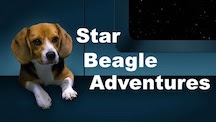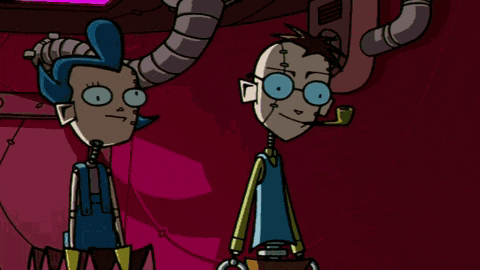The Star Beagle Adventures
Episode 16:
And You And I Part I - Cord of Life
Scene 1:
A Moment’s Answe
A man conceived a moment’s answer to the dream…
16.1
A Moment’s Answer
Gan Baatar had been born and raised on the artificial planet, Cun Ling, in the burgeoning city of Ba Sing Se. He had never been to Earth, much less to Mongolia, where part of his ancestry lay. At a young age, he had moved to the planetary capital city, Trantor, and become an engineer with Nakamura Enterprises, where his theories about warp field modulation had led to the development of some of the U.S.S. Beagle’s most advanced technology.
He was brilliant, hard working and at age 26, unmarried and rarely seen outside of his small office near the Beagle’s engineering section. It was the Beagle’s Dean of Ship, Sakura Nakamura Holland, who recommended Gan for the ASA 4 colony. He could easily continue his ground breaking work from an office on the planet, but Sakura was concerned that he was swiftly heading toward burnout.
Sakura had sent Gan ahead with the colonists on the U.S.S. Puppy. And instead of advanced computer equipment, she had given him a morin khuur. Gan had kept the instrument cased during the journey and had immersed himself in all of the tutorial programming that had come with it, managing to find a quiet corner first of the U.S.S. Puppy, then the U.S.S. Bluebird and had gone largely unnoticed among the colonists, who were dominated by a boisterous lot of tellarite biologists.
But the young engineer’s reclusive ways could not keep him anonymous for even a few days in a colony of less than 40 people. Even in the 25th Century, colonization took physical effort. In no insignificant way, that was part of the point. Every colony had to get back to the basics of cultivation and society building that was the commonality among all humanoids.
Digging, planting, harvesting, foraging… all these things were culture shock enough to Gan. But doing so in the company of a dozen rowdy, rough-edged, snarky, insulting tellarites along with a small contingent of United States Marines who had grown accustomed to, fond of, and acculturated to these beastly aliens… that was the real culture shock.
“Yesterday, you had a grand total of 3 words for me,” said the tiny, pink, slightly porcine and oddly cute tellarite, Norkaond Vef. “Let’s see if you can break that record today…”
Gan flinched as a massive paw landed on his shoulder from behind. “You just have to get him talking about something that interests him.” Even though Gan was a gangly 6’0”, the massive and bear-like director of the Tellarite Biological Survey, Drisk javWalirsh, towered over him. “I have it on good authority that talkative here will bend your ear for hours about the finer points of advanced warp field theory.”
Vef sidled up until she was almost touching Gan. The tellarites seemed to have no concept of personal space and would occasionally crowd in a group around their astonished human companions as if they were traveling in a cramped turbo-lift instead of strolling across an open landscape.
“Handsome here doesn’t have to talk to be interesting,” Vef crooned. “In fact, the nervous silent type here is a real…”
“So you have to show me this instrument you’ve been hiding in your hut. And you have to show it to me right now.” Gan had been uncomfortable around Private First Class Guz Maxwell, but at this moment, the young marine had become a gift from heaven. Guz sidled up to Gan’s left side, wrapped an arm around the young engineer’s shoulders and firmly led him away from the tellarites.
“Hey!” Vef pouted, only to be met with her director’s enormous laughter.
“Ha! Let him go, Norkie. You’ve been outbid.” javWalirsh laughed again.
“He’d rather go boy-boy than try on an alien,” Vef pouted.
“Nope. It’s all about you, Norkie,” javWalirsh joked as he landed a paw on the tiny, pink tellarite’s head and mussed her tuft of white hair. “Go fix up your makeup and try another day.”
“We have got to get you fixed up or Norkie is going to eat you for lunch,” Guz said quietly. “And I happen to know a very lonely girl who’s been making goo-goo eyes at you, not that you’ve noticed.” Guz ushered Gan into his own hut. “Now I have an ear for music and you’re not just good. You’re making me feel inadequate. And I’m really good. Show me this thing.”
Instead of speaking, Gan picked up the instrument and displayed it, reverentially, to his savior.
“The top is Fender skinwood. The only place it grew was on Fender Marsh. You can’t get it now, since the jem’hadar destroyed the planet. The strings were produced by the foozies… I have no idea how. They still live in a few places. There’s a colony of them in Wakanda on Cun Ling.” Gan Baatar had not said this many words since arriving on Rattleroot Island on ASA 4.
Gan suddenly realized that the young man sitting across from him was one of the few people he knew who could be trusted handling a valuable instrument. He had seen Guz play electric guitar and was impressed with the young marine’s sensitivity. It was only the thought of Guz being attracted to men that had made Gan uncomfortable. It had not been a conscious thought, but now that it had occurred to him, it also occurred how silly it was. Gan took a breath, then gingerly handed the instrument to Guz, who handled the morin khuur with the same reverence.
“Gorgeous,” Guz observed, turning the instrument over and inspecting it closely. “The horse heads on the bridge-plate and the tuning head are hand-carved.” He looked more closely at the neck, then the soundbox and the soundboard. “It’s all hand carved. And assembled by hand.”
“The bow, too,” Gan said, holding up the bow for the instrument. Tiny horse heads were carved on both ends of the bow. “Mrs. Holland made it for me. By hand. She had sourced the materials for it shortly after she recruited me for this mission.”
Guz’s eyes widened, stunned at the emotional value of the instrument he was holding. “The mother-of-pearl characters inset into the neck…”
“Her signature,” Gan confirmed.
“How long have you been playing?” Guz asked.
“This is my first instrument,” Gan replied. “I’ve been singing the songs all my life, but never really singing them the way they’re supposed to be sung. Now that I can play them…”
“We need a bonfire. We need a feast. We need to bring people together and celebrate this place. You. You’re it. You’re what we’ve been looking for,” said Guz.
“What are you talking about?” Gan was completely confused.
“You. Your songs. Your voice. You’re the most natural musician I’ve ever heard and I’m really, really good. Phillip’s really good. So is Falok. Cetris Rye is an amazing singer. But there’s this natural wildness to your sound. Something primal that we really need.” Guz handed the morin khuur back to the young engineer.
“There’s a big confrontation with those holy landers coming. We’re going to be putting our lives on the line for those weird vulcan-human-mushroom-shrimp that are just now taking up orbit around this planet. We’ll be putting our lives on the line for those lizard-riding, gorilla-people who live pretty much everywhere on this planet except for this isolated little island.”
Guz took a breath. “We’re even going to try to protect those giants on ASA 2. And the holy landers outnumber us at least 15 to 1. We need something to bring everybody together. Something that will bring it all home what we’re fighting for. Why we’re standing guard over a star system thousands of lightyears from the Federation. And it’s all there in your songs. I’ve heard it. I’ve heard you singing. Someone needs to speak for the wilderness. You are the voice of the wilderness. We need to hear that voice.”
 " and then the author's note mercifully confirmed I hadn't started fanfic-ing the fanfic.
" and then the author's note mercifully confirmed I hadn't started fanfic-ing the fanfic. 
 " and then the author's note mercifully confirmed I hadn't started fanfic-ing the fanfic.
" and then the author's note mercifully confirmed I hadn't started fanfic-ing the fanfic. 






